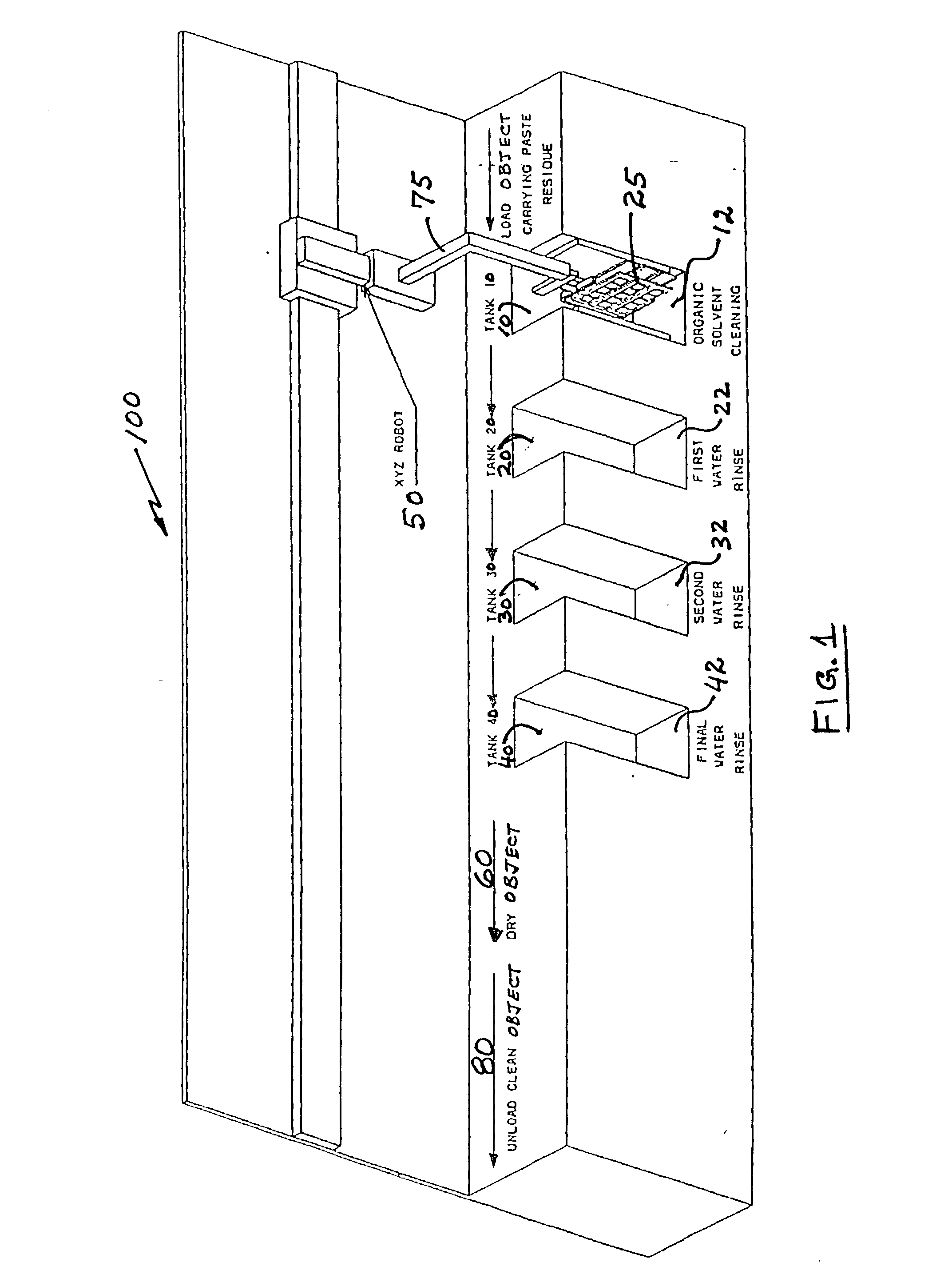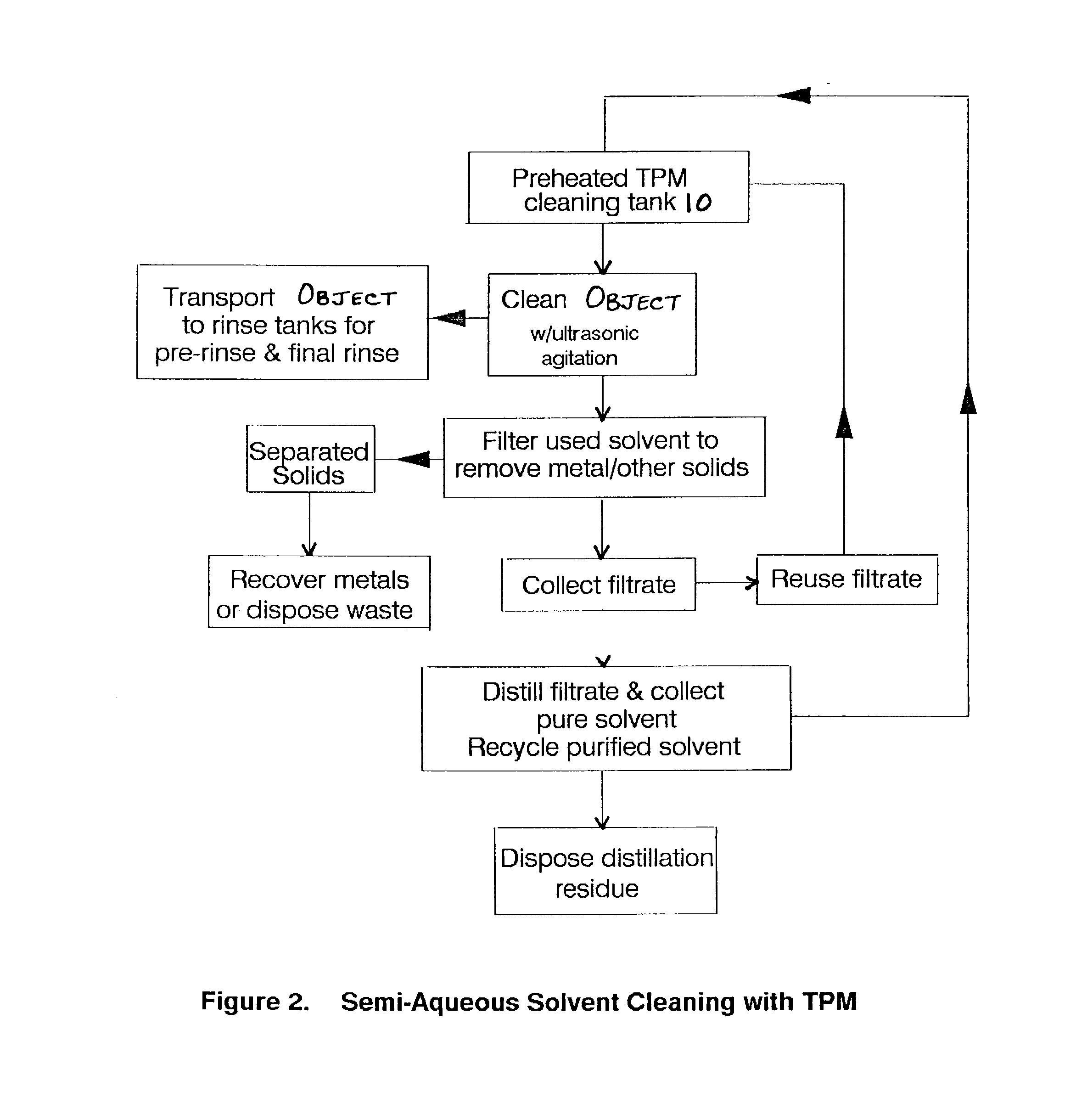Semi-aqueous solvent cleaning of paste processing residue from substrates
a technology of semi-aqueous solvent and paste processing residue, which is applied in the direction of liquid cleaning, soldering apparatus, dissolving, etc., can solve the problems of paste residue entrapment in the mask, yield loss, special handling and costly equipment design,
- Summary
- Abstract
- Description
- Claims
- Application Information
AI Technical Summary
Benefits of technology
Problems solved by technology
Method used
Image
Examples
example 1
[0096] Molybdenum metal masks having fine pitch etched features for via and wiring metallurgical patterns, and for I / O pads, suitable for multi-layer ceramic substrates were used for screening conductive pastes onto ceramic green sheet with a paste screening tool. Various conductive pastes used for screening in ceramic technology generally comprise of metal filler as the predominant component in a polymer binder-solvent system. Representative pastes screened onto green sheets using the metal masks contained between about 70 to about 85 percent metal powder filler, typically Molybdenum, Copper, Tungsten, and Nickel, in ethyl cellulose type polymer binders and a high boiling polar solvents, for example, 2,2,4-trimethylpentane diol 1,3-monoisobutyrate, or diethylene glycol alkyl ether acetate in conjunction with fatty acid ester based surfactant, thickening agents, and other additives like antioxidants, coloring agents, corrosion inhibitors, etc. Also tested were non-polar conductive p...
example
(B)
[0098] Similar process as discussed in Example 1, was used for cleaning screening paste residue from paste applicators and other processing parts / equipment 25, which required up to between about 5 to about 10 min ultrasonic agitation for complete removal of the paste from all areas. The cleaning process could be accelerated by using ultrasonic with immersion pressure spray with single or multi-nozzle systems, followed by water rinse and drying cycles and described in Example 1(A). Microscopic inspection of cleaned and dried parts 25, showed no evidence of paste residue in any area of the parts 25.
PUM
| Property | Measurement | Unit |
|---|---|---|
| surface tension | aaaaa | aaaaa |
| temperature | aaaaa | aaaaa |
| flash point | aaaaa | aaaaa |
Abstract
Description
Claims
Application Information
 Login to View More
Login to View More - R&D
- Intellectual Property
- Life Sciences
- Materials
- Tech Scout
- Unparalleled Data Quality
- Higher Quality Content
- 60% Fewer Hallucinations
Browse by: Latest US Patents, China's latest patents, Technical Efficacy Thesaurus, Application Domain, Technology Topic, Popular Technical Reports.
© 2025 PatSnap. All rights reserved.Legal|Privacy policy|Modern Slavery Act Transparency Statement|Sitemap|About US| Contact US: help@patsnap.com



